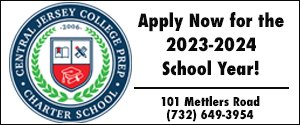District Officials: Student Proficiency Gaps Are Being Addressed

Student proficiency rates in English Language Arts, Science, and Math are approaching pre-pandemic levels, but there still are some gaps that need to be addressed, school district officials said recently.
Proficiency rates took a hit from the 2019-2020 school year – the beginning of the Covid-19 pandemic – through the 2020-2021 school year when all students were learning at home on computers, to the 2021-2022 school year, when students returned in late Spring, but then had to remote learn after many Covid cases spring up in schools.
The 2022-2023 school year was the first full school year since Covid, and the proficiency rates discussed at the October 19 Board of Education meeting by Dan Loughren, the Assistant Superintendent for Curriculum and Instruction, reflected student progress during that year.
“2022-23 was the first full year back and we certainly see in the data vestiges of the disrupted learning,” Loughren said.
In general, proficiency rates chart grade-level learning and are scored in a range from “did not meet expectations” to “meets or exceeds expectations.”
The biggest cause for concern among district officials was the performance of 6th Grade students in English Language Arts, Loughren said.
In a comparison of district and state proficiency rates, about 29 percent of District 6th Grade students were meeting or exceeding expectations, compared to a state average of 49 percent. That is the largest discrepancy between district and state averages.
“We’re looking at the data and analyzing possible causes for the discrepancy,” Loughren said. “We’re reminded that these were the students who were in Grade 3 in Spring of 2020 … that’s when the pandemic affected these students. Grade 4 they were learning on computer, Grade 5 was the year we sort of came back and Grade 6” is the year under review.
“We are keeping an eye on these students,” he said.
See the entire screencast presentation here.
Overall, in English Language Arts, “42 percent of our students were proficient, 21 percent of our students were approaching proficient, and 37 percent were not proficient,” he said. “So 63 percent of our students were either proficient or approaching proficient when we did that assessment last Spring.”
In science, approximately 50 percent of district students reached levels of proficiency, while about 50 percent did not, Loughren said.
Only about 8 percent of Grade 8 students exhibited proficiency in science, compared to the state average of 19 percent, Loughren said. He attributed the gap to the Covid years of students having to learn outside of the classroom for long periods of time.
Loughren said district officials were also concerned with middle school proficiency levels. As in English Language Arts, high percentages of students in grades 6-8 were 2- to 3-plus grades below their grade level, he said.
There were decreases in those percentages from the Fall to Spring semesters, however.
On a bright note, Loughren said, this is the first time in school history where the average proficiency rates for students taking Algebra 1 were higher than the state average.
“When you combine proficient with approaching proficient, about 56 percent of our students are proficient or approaching proficient,” he said.
Loughren and schools Superintendent John Ravally said that district officials believe middle school proficiency rates in ESL, science and math can be raised by changing the learning platforms used by the district.
Students currently use an assessment and instruction program called i-Ready; the district will be switching to a program called IXL.
“We consistently have seen that it’s probably time to take a different approach, which is what we’re doing with IXL,” Loughren said.
“The other challenge with i-Ready is i-Ready fatigue,” Ravally said. “The research around i-Ready is you have to really be on that 45 minutes a week and be progressing through the platform in order to show the kind of growth. What happens when kids get to middle school, I think, is they get i-Readied out. I think, to put it their words, enough already with the i-Ready.”
“That’s where the IXL perhaps will help us,” he said. “We’re hopeful that it will alleviate that fatigue.”
Overall, Ravally said, “We lost a lot of ground, no question about it. We tried to do things that would avoid us losing so much ground, but inevitably the pandemic affected us even more so than other districts. Look at the state averages, they’re horrible as well.”
“The good news is we are making progress to getting back where we were, it’s just a shame we lost so much time,” he said.
Loughren noted a few ways in which the district hopes to help students bridge the proficiency gap.
“Paying attention to starting points of the kids; giving teachers strategies to help kids reach their own goals; we’re incentivizing things … supervisors and teachers and coaches are all very motivated to help kids reach their goals,” he said. “We believe that over time, these gaps that we see, for lack of a better term, will diminish.”























































